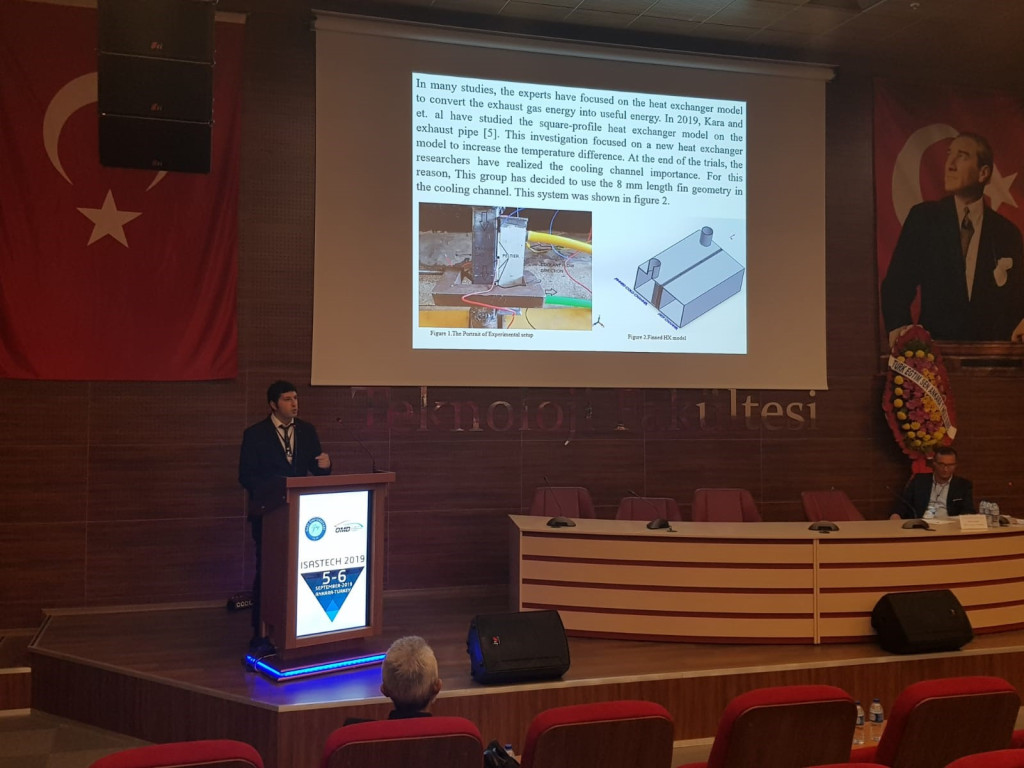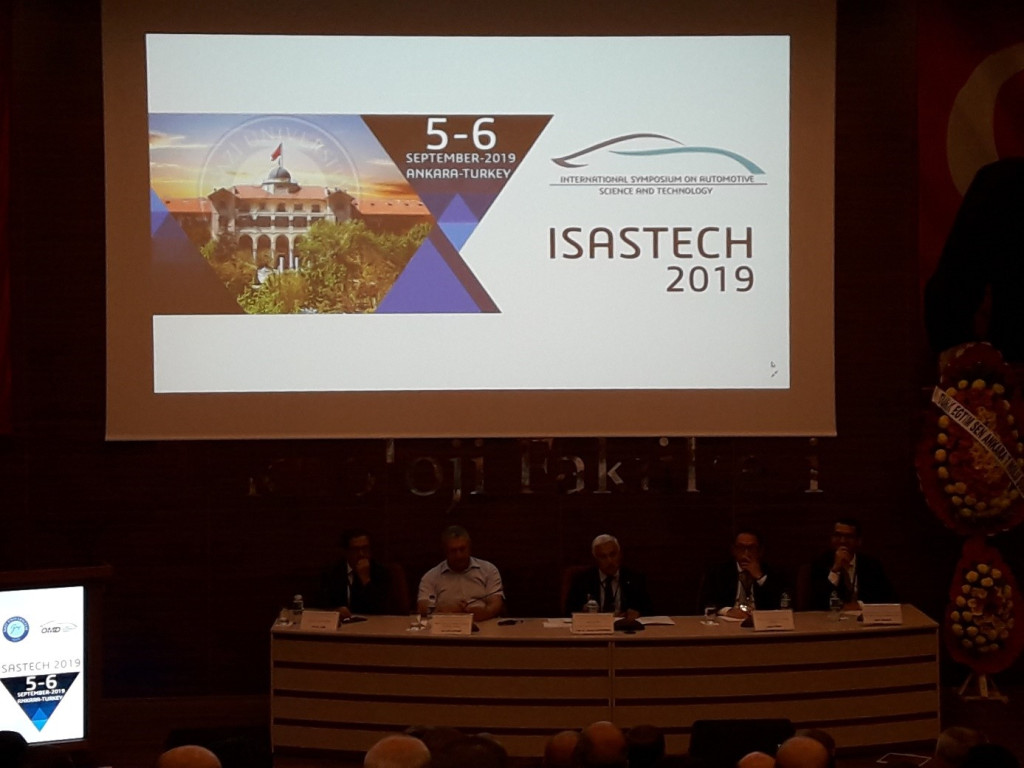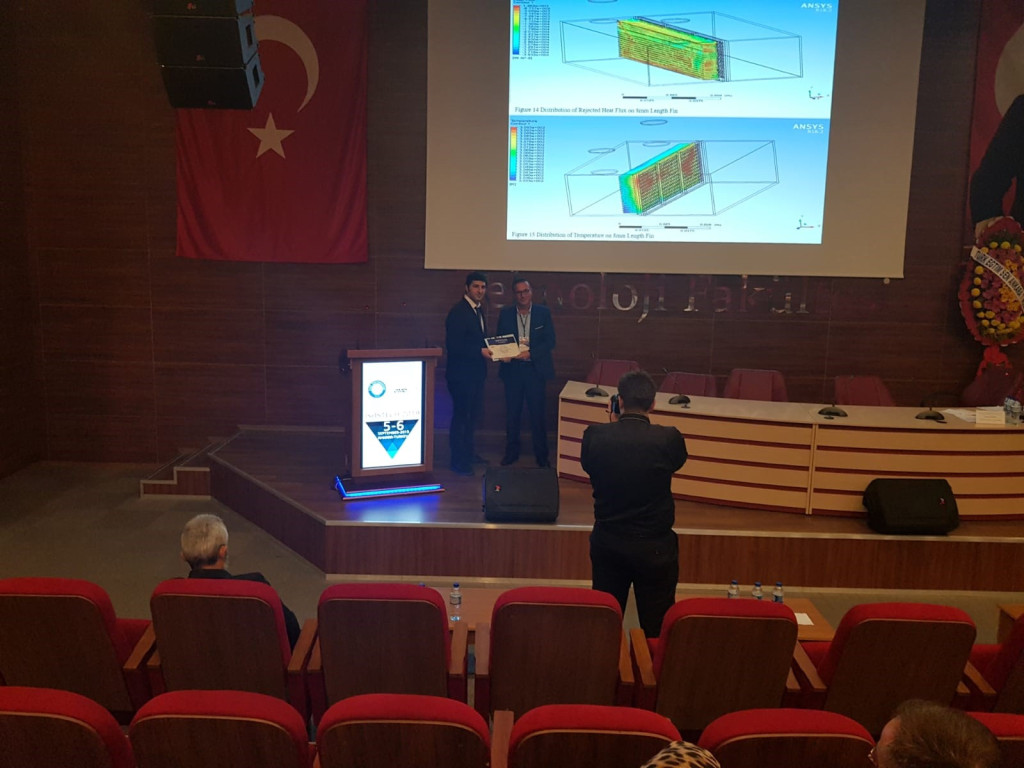ISASTECH-2019 Sempozyumuna Davetli İdik
06.09.2019
5-6 Eylül 2019 tarih ve Gazi Üniversitesi Teknoloji Fakültesi Taşkent Binası konferans salonlarında, Otomotiv Mühendisleri Derneği (OMD) ve Gazi Üniversitesi tarafından gerçekleştirilen International Symposium on Automotive Science and Technology (ISASTECH-2019) sempozyumuna Atılım Üniversitesi Otomotiv Mühendisliği olarak davetliydik.
Sempozyum, otomotiv alanında AR-GE faaliyetleri yürüten akademisyen, mühendis ve sektör temsilcilerini bir araya getirmesinin yanı sıra, sektör gündemindeki son gelişmelerin tartışılmasına ve bu cihette ön görülen çözüm(ler) doğrultusunda muhtemel ve gerekli kadro teşkili ve iş birliğine de imkan verir nitelikte.
Bölümümüz araştırma görevlisi Ozan Tekin'in, "CFD Analysis and Optimal Sizing of Finned Surface on a Novel Combined Turbine-Peltier System" başlıklı çalışması/yayını ile başvurduğumuz ve katıldığımız 5 Eylül 2019 tarihli toplantıda yapmış olduğu sunumu olumlu geri dönüşler almaya devam ediyor. Sunum ile ilgili ayrıntılı açıklama aşağıda mevcuttur.
Abstract
CFD Analysis and Optimal Sizing of Finned Surface on a Novel Combined Turbine-Peltier System
Ozan Tekin*, Emre Kara** and Mehmet Sait Soylemez** *Atilim University, **Gaziantep University
Energy efficiency and environmental pollution are the main and up-to-date drawbacks of the automotive industry. Due to lack of efficiency and excessive emissions of currently used internal combustion engine (ICE) configurations, scientific studies should be focused on the improvement of those engines. Exhaust gas contains a considerable amount of heat energy in ICEs’ manifold exit. In literature, lots of studies can be surveyed in which it was tried to convert this heat energy into useful energy. Thermoelectric power generator (TEG) is one of the most used converting systems in this study field. P-type and N-type semiconductors are used in TEG that can generate power using temperature differences between the surfaces of the semiconductor. ZT value is a remarkable parameter of TEG efficiency. ZT value depends on the Seebeck coefficient, temperature difference, thermal conductivity, heat transfer coefficient, and density. Owing to the increase in the temperature difference between the surfaces, the converted energy amount can be increased by changing the type of semiconductors and geometry of the heat exchanger. Moreover, recent studies about fin efficiency have shown that fin efficiency is related to fin sizing. For this reason, the current study has been focused on finding the optimum dimensions in the cooling system. Consequently, this study found out optimum fin length and thickness using CFD method for the developed turbine-Peltier system.




